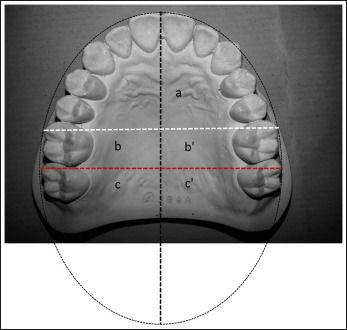We want to congratulate Drs Chung and Wolfgramm for their article in the February 2015 issue shining a light on the use of a mathematical equation for ellipse to evaluate arch perimeter (Chung DD, Wolfgramm R. Maxillary arch perimeter prediction using Ramanujan’s equation for the ellipse. Am J Orthod Dentofacial Orthop 2015;147;235-41).
The use of this equation correlates with various studies that proved the dental arch to be geometrically similar to an ellipse. It also describes the amount of space gained during orthodontic therapy.
The use of this equation for an ellipse correlates with a 1969 study by Currier, who stated that the ellipse is the best geometric figure for describing the form of both maxillary and mandibular dental arches when landmarks on the facial and buccal surfaces of the teeth are used for comparisons. Of the many equations to determine the perimeter of the ellipse, that of Ramanujan (1914) is considered to be the most accurate.
But we have a few suggestions and corrections to the article as published.
Suggestion 1: the printed equation needs rectification:
where a is the semimajor axis, b is the semiminor axis, p is the perimeter, and h = ( a − b ) 2 / ( a + b ) 2 .
But other studies by Jones et al in 1989 described dental arches in pretreatment and posttreatment dental arches as parabolic curves by using computerized analysis. Germane et al in 1991 and Bhaun et al 1998 proved that arch forms have a more complex mathematical model of spline and beta function.
Suggestion 2: First, this equation for ellipse should only be used for ideal or theoretical dental arches that are symmetrical and not in actual clinical situations when they are asymmetrical or apparently symmetrical, where the semiminor axes b and b′ need not be the same ( Fig ). Second, patients with dental or skeletal asymmetries or midline shifts leading to a subdivision classification cannot be considered for evaluation with the equation.





